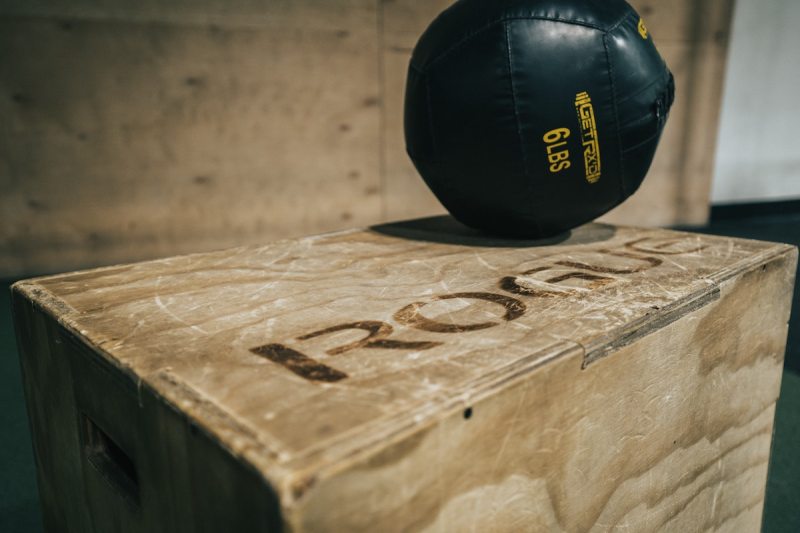
When you’re training, medicine ball workouts help build upper body strength. Adding them to your routine at least three days a week allows you to increase muscle and power in simple movement patterns that are both functional and sport-specific.
Medicine balls are not only for athletes; they benefit any adult who’s interested in maintaining a moderate to high level of fitness. Upper body power depletes with age, so it makes sense to add medicine balls to your routine to counteract that effect.
Utilizing medicine balls also helps build body awareness and better coordination. Your muscle fibers will stretch and contract more quickly and powerfully. This is helpful when maintaining upper body power.
Check out these eight medicine ball workouts for results you’ll love.
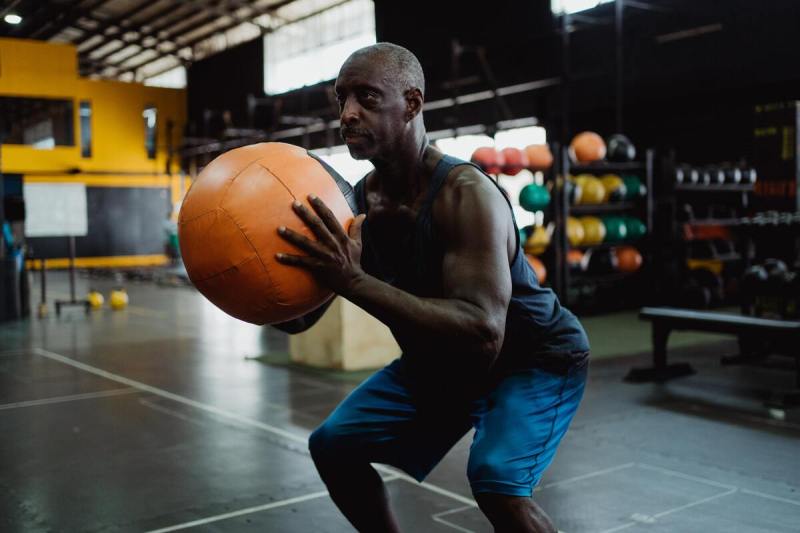
Overhead crunches
Medicine ball overhead crunches target your shoulders. They also tone and strengthen the rest of your upper body as well as your core. Done correctly, you should see an improvement in your shoulder’s range of motion which reduces the risk of injury overall.
Instructions:
- Stand with your feet hip-width apart. Slightly bend your knees.
- Lift the medicine ball up and over your head.
- Circle the medicine ball to the right for 30 seconds and bring it back.
- Circle the medicine ball to the left for 30 seconds and bring it back.
- Repeat for 4-6 reps.
Tips and tricks: Keep your neck relaxed, your core muscles engaged, and your back straight. Open your chest and exhale as you lift the medicine ball over your head. For a more advanced workout, pair the overhead circles with tricep dips or cross-chest curls.

Russian twists
This fantastic exercise develops every part of your core, especially the obliques, shoulders, and hips. You’ll rotate your torso from side to side in a sit-up position with your feet off the ground. Your hip flexors, spine, and latissimus dorsi will also benefit.
Instructions:
- Sit down on the floor with your feet together. Keep your knees bent.
- Lift your feet 2-3 inches off the floor. Engage your core. Straighten your spine at a 45-degree angle. Create a V-shape with your torso and thighs. Keep your back from rounding.
- Hold the medicine ball at the center of your chest.
- Slowly twist your torso to the left. Keep your head straight and neck neutral.
- Allow your shoulders to follow along, rotating as far in each direction as possible as you bring the medicine ball to the floor by your hips.
- Breathe out with every twist.
- Breathe in when you return to the starting position and bring the medicine ball back to the center.
- Continue by bringing the ball to your other side.
- Repeat for 30-60 seconds for 4 sets.
Tips and tricks: Add more resistance with heavier medicine balls as you advance. This generates additional progress over time.
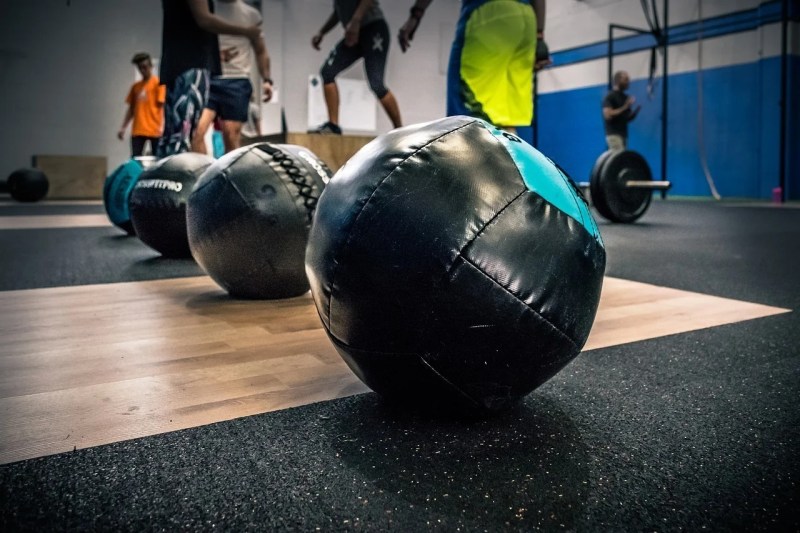
Wall throws
Use a soft, grippy, well-balanced medicine ball about 14” in diameter, no matter the weight. This full-body movement requires a good ball that will work your lower and upper body. This includes quads, glutes, hamstrings, chest, shoulders, and core.
Instructions:
- Hold the ball at your chest.
- Bend your knees to squat down.
- When your thighs are parallel to the floor, explode up and throw the ball against the wall at a specific target.
- Set a timer, and at the beginning of each minute, do 10 reps.
- Rest and repeat.
Tips and tricks: As the ball comes down, make sure to squat deep enough. Quarter squats won’t provide the optimum benefits.
Medicine ball lat pullover throw
Your pecs are the main muscles moving the weight during medicine ball pullovers. Additionally, your lats, triceps, and anterior deltoids also get a good workout. You should also see improvement in your upper body strength around the shoulders and back area.
Instructions:
- Sit on a flat bench with your feet flat on the floor to either side.
- Move your rear end slightly off the bench. Support your lower body with both feet. Keep your shoulder blades on the bench with everything below them off.
- Slightly sink your hips.
- Hold a medicine ball above your chest with palms facing up and arms straight. Be mindful that you’re lifting the weight with your lats rather than your shoulders, chest, or arms.
- Extend your arms and slowly move the ball back so it ends up near the top of your head, and your biceps are next to your ears. Feel the muscles down your ribs and across your back fully stretch.
- Tense up your abdominals as you quickly sit up and simultaneously throw the medicine ball against the wall.
- Catch the ball and return onto your back with the medicine ball above your head again.
- Repeat for 8-12 reps.
Tips and tricks: Don’t lock out your elbows, because it will strain your joints. If you keep your torso in a straight horizontal line, it will target your chest muscles rather than your lats.
Also, don’t bring the medicine ball forward more than when you began. There’s no more tension on your muscles once the medicine ball is above the center of your chest or right about where your arms are perpendicular to your upper body.

Shoulder presses
The shoulder press using a medicine ball is a full-body exercise that targets your shoulders, triceps, upper back, and core. This is also highly effective in developing balance and core strength.
Instructions:
- Hold a medicine ball about an inch in front of your chest.
- Push the ball up toward the ceiling while extending your arms straight overhead.
- Slowly lower the ball back to the starting position.
- Repeat for 8-12 reps and rest.
Tips and tricks: Choose a ball that feels slightly heavy but not overwhelming. For females, a 10-25 pound medicine ball works, and for males, a 20-40 pound medicine ball should be sufficient.
Knee lifts
Knee lifts with a medicine ball increase both upper- and lower-body stability and strength. The medicine ball encourages cardiovascular health with minimal impact. You’ll also build endurance with this aerobic exercise.
Instructions:
- Hold the medicine ball overhead with both hands.
- Lift your right knee to waist level while bringing your arms down, touching the ball to your knee.
- Do the same with your left.
- Engage your torso throughout the exercise. Do not round or arch your spine.
- Repeat for 30–60 seconds.
Tips and tricks: The quicker you do this, the more intense the exercise. However, only move at a pace where you maintain proper form and control of the ball. Keep your back straight to avoid injury.
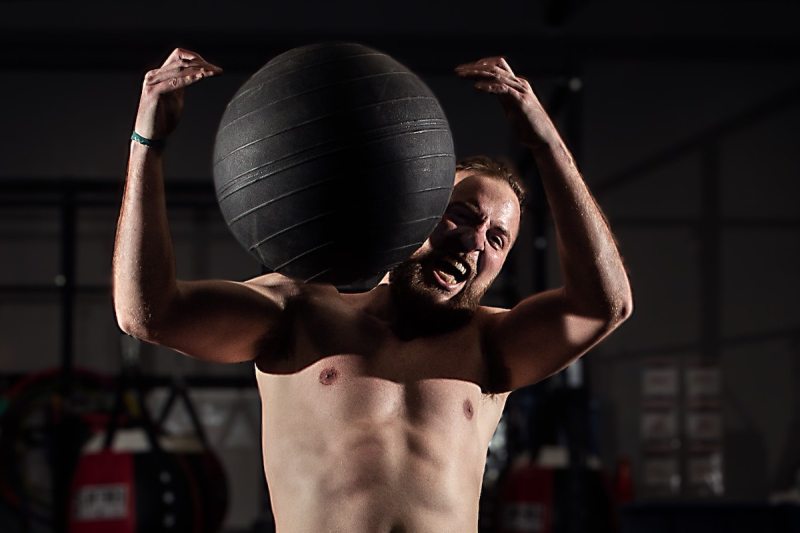
Squat, dribble, and toss
With a medicine ball, this is another upper-body workout to accompany any training. You’ll benefit from dynamic movements that increase your heart rate and offer a lower-body and core workout. The medicine ball strengthens your arms, shoulders, and back.
Practice good posture and form, and keep in mind that the toss takes coordination. Stand with your feet apart about the width of your outer hips to avoid injury and maintain a tall, neutral spine.
Instructions:
- Stand while holding a medicine ball in front of you.
- Toss the ball above your head.
- Squat down as low as you can while maintaining good form and catching it. Make sure your hips sit back. Keep your knees behind your toes.
- Throw the ball to the floor while squatting.
- Let it bounce back up into your hands.
- Toss the ball in the air while standing up.
- Repeat for 1-3 sets of 10-15 reps.
Tips and tricks: Keep your arms locked and vertical rather than bending and/or dropping them forward. Squat as deeply as you can while maintaining a neutral spine, with your heels on the ground and knees in line with your toes.
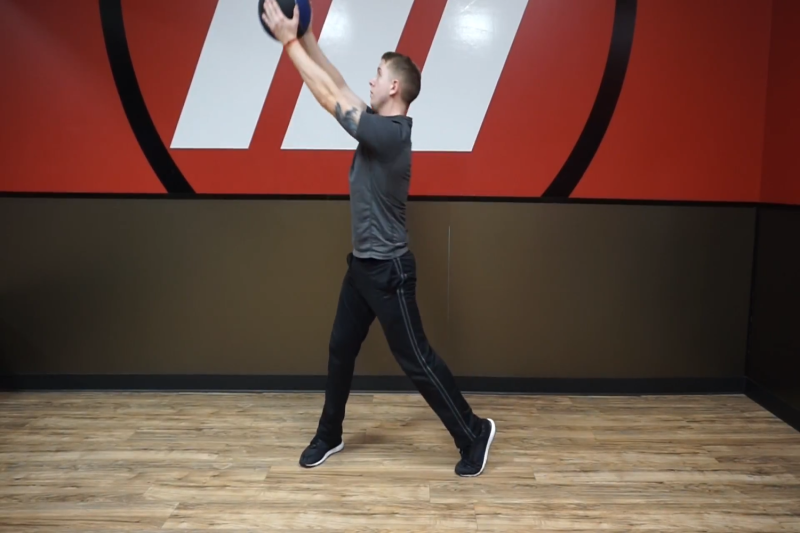
Diagonal wood chop
The diagonal wood chop with a medicine ball strengthens your upper and lower body while specifically targeting your abs and obliques. The diagonal move is a simple, functional movement as your arms naturally reach while your torso rotates like it does in similar real-life circumstances.
This strengthens your triceps, lats, arms, and shoulders.
Instructions:
- Stand with your feet together.
- Hold a medicine ball overhead at a diagonal toward the right side.
- Step out into a left lunge.
- Swing the ball across the body toward the left side.
- Keep your knee behind your toe and rotate through your torso.
- Take the ball back as far as you can.
- Step your left foot back to start while swinging the ball up at a diagonal.
- Repeat for 10–15 reps.
- Switch sides and complete 1–3 sets.
Tips and tricks: Place your feet closer together to work your muscles harder. Increase the weight as you go, and remember that slower speeds can provide more of a challenge.



